Comments / Questions (21)
Velvet wrote:
Are only odd number rows diagrammed or all rows? It would be very helpful to have the rows on the diagram numbered.
22.09.2016 - 22:14DROPS Design answered:
Dear Mrs Velvet, all rows are shown in diagram, both from RS and from WS. Read more about diagram here. Happy knitting!
23.09.2016 - 08:36
![]() Julia wrote:
Julia wrote:
Hallo, wie muss ich denn das Muster lesen und stricken? Von oben nach unten? Von links nach rechts? oder jeweils umgekehrt? vielen Dank!
30.10.2015 - 12:05DROPS Design answered:
Generell lesen Sie Strickmuster immer ganz unten rechts beginnend nach links, das ist die 1. R (Hin-R), dann lesen Sie die nächste R von links nach rechts (= Rück-R) usw.
30.10.2015 - 12:23
![]() Naomi H wrote:
Naomi H wrote:
What does it mean when it says..."work next round as follows: P4, K2, P4, K2 in each of the next 2 sts (i.e. K2 becomes K4 – this is mid upper glove)? Also, when it says "Work next round as follows: P2, M.1, P2 and rib as before on remaining 20 sts - insert a marker in the second of these rib-sts (= thumb st).", do you do P2, M1, P2, K2, P4, K2, then insert it the marker? Thanks for any advice!
09.02.2015 - 14:53DROPS Design answered:
Dear Naomi H, K2 in each of the next 2 sts means to work the next 2 sts into front and back loop (you inc a total of 2 sts and there is now K4 over K2 from previous round). The marker for thumb is inserted there: work P2, M1, P2, K2, place a marker in the 2nd K st just worked, and continue in rib as before (P4, K2) to the end of round. Happy knitting!
09.02.2015 - 16:13
![]() Lucy wrote:
Lucy wrote:
How many needles are used in this pattern and is it knit in the round or knit flat?
17.01.2015 - 07:48DROPS Design answered:
Dear Lucy, gloves are worked in the round with double pointed needles (set of 5 needles). Happy knitting!
19.01.2015 - 11:16
![]() Inge Oudt wrote:
Inge Oudt wrote:
Voor het meerderen voor de duim moet je iedere 3e naald meerderen. Is dat dan naald meerderen, 2 pennen gewoon en dan weer pen meerderen. Of naald meerderen , 3 pennen gewoon en dan weer pen meerderen?
01.01.2015 - 17:53DROPS Design answered:
Hoi Inge. Ja, je meerdert in nld 1, brei 2 nld gewoon en meerder weer in de volgende en 3e nld na de vorige meerdering.
14.01.2015 - 14:51
![]() Elena Regis wrote:
Elena Regis wrote:
Finalmente ho realizzato il guanto destro!!!! Ho faticato molto a capire le istruzioni, M1 è corretto solo per una lavorazione su due ferri non per il circolare; in tal caso bisogna invertire tutti gli incroci
12.02.2013 - 15:24DROPS Design answered:
Buongiorno, abbiamo controllato, ma il diagramma è corretto per la lavorazione in tondo.
14.02.2013 - 12:49
![]() Elena Regis wrote:
Elena Regis wrote:
M1 è corretto ma NON per la lavorazione in circolare del guanto per la quale gli incroci DEVONO ESSERE TUTTI INVERTITI.
07.02.2013 - 08:16
![]() Elena Regis wrote:
Elena Regis wrote:
Potete dirmi come va interpretato il diagramma? La lavorazione in circolare è sempre sul diritto. Grazie.
03.02.2013 - 00:21DROPS Design answered:
Buongiorno, il diagramma va letto dal basso verso l'alto, la lavorazione in circolare è sempre sul diritto del lavoro, quindi deve lavorare i vari punti come se fosse sempre sul diritto del lavoro.
14.02.2013 - 12:36
![]() Elena wrote:
Elena wrote:
Ho provato di nuovo eseguendo il diagramma tutto sul diritto, quindi quadretto vuoto a diritto e quadretto X a rovescio. la losanga non è venuta.
03.02.2013 - 00:20DROPS Design answered:
Buongiorno, il diagramma è corretto per la lavorazione circolare, il quadretto con la x va lavorato a rovescio e corrisponde alla parte esterna e interna della losanga, i quadretti vuoti sono lavorati a diritto e andranno a formare la lavorazione della losanga.
14.02.2013 - 12:38
![]() Elena Regis wrote:
Elena Regis wrote:
Grazie mille per la risposta. Il problemaè nella comprensione della legenda del diagramma. Cosa intendete con diritto sul rovescio e rovescio sul diritto? Un punto a diritto su uno sottostante a rovescio e un punto rovescio su uno sottostante a diritto oppure un punto a diritto sul rovescio del lavoro ed un punto rovescio sul diritto del lavoro?
27.01.2013 - 21:06DROPS Design answered:
Nella legenda del diagramma "dir. sul rovescio e rov. sul diritto" si intende lavorare a dir. sul rovescio del lavoro e a rov. sul diritto del lavoro.
14.02.2013 - 09:56
Maritza Gloves#maritzagloves |
|||||||||||||||||||
|
|
|||||||||||||||||||
DROPS gloves in ”Alpaca” and ”Kid-Silk” with cable pattern .
DROPS 117-10 |
|||||||||||||||||||
|
PATTERN: See diagram M.1- diagram shows the whole pattern. ---------------------------------------------------------- ---------------------------------------------------------- RIGHT GLOVE: Cast on 42 sts on double pointed needles size 3 mm / US 2or3 with Alpaca + Kid-Silk. K 2 rounds and continue in rib, P4/K2. When piece measures 7 cm / 2¾" work next round as follows: P4, K2, P4, K2 in each of the next 2 sts (i.e. K2 becomes K4 – this is mid upper glove), continue with P4/K2 as before = 44 sts. Work next round as follows: P2, M.1, P2 and rib as before on remaining 20 sts - insert a marker in the second of these rib-sts (= thumb st). REMEMBER THE GAUGE! When piece measures 11 cm / 4⅜" inc for thumb gusset as follows: Inc 1 st on each side of st with marker - inc by making 1 YO, on next round work YO into back of loop to avoid a hole. Inc on every 3rd round a total of 6 times = 13 thumb sts in stockinette st. When piece measures 17 cm / 6¾" slip the 13 thumb sts on a stitch holder. On next round cast on 1 new st behind the thumb = 44 sts on needle. Continue as before with pattern and rib until M.1 has been completed. Piece now measures approx 20 cm / 8". Now keep the first 4 sts on needle, slip the next 36 sts on a stitch holder and keep the 4 last sts on needle. LITTLE FINGER = 8 sts, cast on 2 new sts towards the hand = 10 sts. P all sts in the round for 6 cm / 2⅜", then P2 tog all the way round. Cut the thread and pull it through remaining sts, tighten and fasten. HAND: Slip sts from stitch holder back on needle, pick up 3 sts towards little finger = 39 sts. Work 2 rounds with K over K and P over P - AT THE SAME TIME on round 2 K2 tog on the 4 sts on cable = 37 sts. Keep the 3 sts picked up towards little finger + 5 sts on each side of these on needle. Slip remaining 24 sts back on stitch holder. RING FINGER = 13 sts, cast on 1 new st towards sts on stitch holder = 14 sts. P all sts in the round for 7.5 cm / 3", then P2 tog all the way round. Cut the thread and pull it through remaining sts, tighten and fasten. MIDDEL FINGER: Slip 5 sts from each end of stitch holder back on needle, pick up 3 sts towards ring finger and cast on 1 new st towards sts on stitch holder = 14 sts. P all sts in the round for 8.5 cm / 3¼", then P2 tog all the way round. Cut the thread and pull it through remaining sts, tighten and fasten. INDEX FINGER: Slip the remaining 14 sts from stitch holder back on needle, pick up 2 sts towards middle finger = 16 sts. P all sts in the round for 7 cm / 2¾", then P2 tog all the way round. Cut the thread and pull it through remaining sts, tighten and fasten. THUMB: Slip the 13 thumb sts back on needle and pick up 5 sts in edge behind the sts = 18 sts. K all sts in the round for 6 cm / 2⅜", then K2 tog all the way round. Cut the thread and pull it through remaining sts, tighten and fasten. LEFT GLOVE: Like right glove, but mirrored, i.e. inc for thumb gusset on each side of the last but one rib st on round. Work little finger as follows: Slip the first 19 sts on a stitch holder (= upper hand), keep the next 8 sts on needle and slip the last 17 sts on stitch holder (= palm of hand). |
|||||||||||||||||||
Diagram explanations |
|||||||||||||||||||
|
|||||||||||||||||||
 |
|||||||||||||||||||
Have you finished this pattern?Tag your pictures with #dropspattern #maritzagloves or submit them to the #dropsfan gallery. Do you need help with this pattern?You'll find 16 tutorial videos, a Comments/Questions area and more by visiting the pattern on garnstudio.com. © 1982-2025 DROPS Design A/S. We reserve all rights. This document, including all its sub-sections, has copyrights. Read more about what you can do with our patterns at the bottom of each pattern on our site. |
|||||||||||||||||||

















































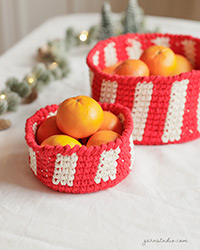
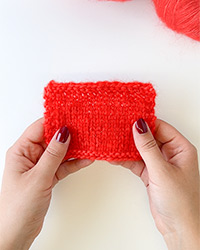
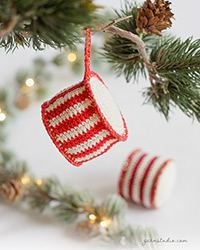
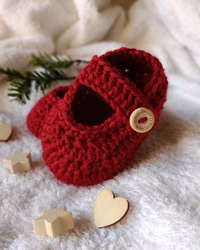
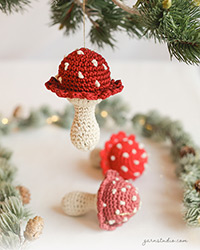
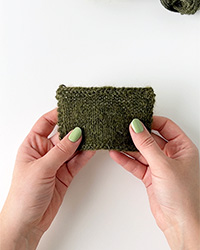
Post a comment to pattern DROPS 117-10
We would love to hear what you have to say about this pattern!
If you want to leave a question, please make sure you select the correct category in the form below, to speed up the answering process. Required fields are marked *.